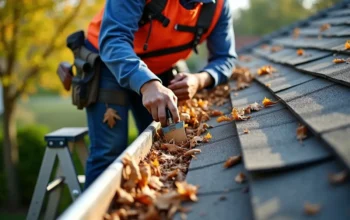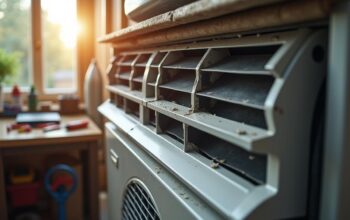
To ensure your basement stays dry and secure, consider effective waterproofing solutions. Many people overlook this vital area until water seepage or musty odors appear, which can lead to structural concerns and an uncomfortable environment. Taking a proactive stance can protect your belongings, maintain property value, and give you peace of mind when storm clouds gather.
A damp basement often signals lingering issues beneath the surface. Excessive moisture can trigger mold growth, peeling paint, and unpleasant smells. By combining the right approaches—from exterior waterproofing to interior drainage systems—you create a robust barrier against water infiltration. The good news is that you don’t have to live with dark, damp corners. With a few targeted measures, both old and new homes can stand strong against intrusive moisture.
Contents
- 1 A Solid Start With Foundation Repair And Water Damage Prevention
- 2 Effective Wet Basement Solutions For Lasting Peace Of Mind
- 3 Practical Drainage Systems And Sump Pump Installation
- 4 Exterior Waterproofing And Soil Grading
- 5 Crawl Space Encapsulation And Damp Proofing Strategies
- 6 Wall Waterproofing And Hydrostatic Pressure Solutions
- 7 Moisture Control And Basement Ventilation Tactics
- 8 Basement Sealing For Added Peace Of Mind
A Solid Start With Foundation Repair And Water Damage Prevention
When water penetrates your foundation, the result can be cracks and even structural instability. Foundation repair is often the first step in protecting your home from more serious damage. Some solutions involve concrete crack repair or filling vulnerable gaps with epoxy injections. By tackling these small issues early, you help maintain a solid base for the rest of your home.
Water damage prevention includes diverting rainwater away from your foundation with downspout extensions and properly maintained gutters. Soil grading around your perimeter also keeps water from pooling along your walls. You’ll reduce water seepage and give your foundation the security it needs to stay strong. Avoid waiting until basement leaks appear; consistent upkeep makes an enormous difference in the long run.
Spotting Early Signs
Sometimes, it’s easy to miss the subtle clues of foundation problems. Hairline cracks, slight tilts in the floor, or a hint of musty odor can be the first red flags. Regular inspections keep you one step ahead, allowing you to schedule leak repair before a minor fracture turns into a major concern.
Effective Wet Basement Solutions For Lasting Peace Of Mind
Few things are more frustrating than a chronically wet basement. Wet basement solutions often combine strategies like damp proofing and sealing. A careful sealant application on interior walls can guard against minor condensation and occasional water incursion. However, truly persistent moisture might require more robust measures, such as interior drainage systems that collect and channel water out.
Basement humidity can quietly rise without anyone noticing. Over time, this excess moisture leads to mold prevention challenges and damaged belongings. Installing dehumidification systems helps maintain normal humidity levels, while waterproof membranes applied to walls or floors stop water from seeping in. Together, these methods form a strong defense against unwanted dampness.
Practical Drainage Systems And Sump Pump Installation
Proper drainage systems are a cornerstone of water damage prevention. When water collects around your basement, an interior drainage channel can guide excess moisture to a sump pit, ensuring water drainage systems work efficiently. This setup often pairs well with sump pump installation, a life-saver when rain or melting snow accumulates faster than the ground can absorb it.
A well-placed sump pump pulls water out of your basement before it has a chance to puddle. To further enhance flood prevention, consider having a battery backup or secondary pump ready in case of power loss. This precautionary step can be invaluable for safeguarding your property and possessions. And if lingering drips persist, a vapor barrier under floors can add another layer of protection by blocking moisture from below.
Keeping Your Sump Pump In Top Condition
Regular inspections are crucial for reliable service. Clear any debris from your sump pit, check the pump’s power connection, and make sure the discharge pipe isn’t clogged. Proactive steps like these keep your pump functioning properly when the next heavy downpour hits.
Exterior Waterproofing And Soil Grading
Shifting your attention outside can dramatically reduce the risk of basement leaks. Exterior waterproofing uses specially formulated waterproof coatings along the external foundation walls. These coatings help prevent water penetration, especially when heavy precipitation puts extra pressure on your home’s perimeter. Careful excavation around the foundation and the addition of drainage boards further enhance your defenses against water incursion.
Soil grading complements these measures by guiding water away from the house instead of allowing puddles to form around the base. Over time, soil can settle and create areas where rainwater collects. Resealing that perimeter and refilling low spots are quick ways to enhance flood protection. This dual approach of exterior treatments and good grading ensures fewer concerns about hydrostatic pressure over the long run.
Crawl Space Encapsulation And Damp Proofing Strategies
Crawl spaces can also accumulate moisture, which might rise upward and affect the living areas above. Crawl space encapsulation with waterproof membranes is a way to trap out humidity and keep conditions stable. Sealing vents and adding dehumidification systems help maintain a consistent environment, reducing the likelihood of pests or mildew. If your foundation includes a crawl space, investing in proper encapsulation can deliver significant returns through improved air quality and structural integrity.
Damp proofing happens both inside and outside. On the interior, a thick coating of waterproof material can lock out minor condensations. On the exterior, damp proofing serves as an extra shield against water seepage. Think of it as the middle ground between standard waterproof coatings and heavier-duty exterior waterproofing. Even simple steps like patching cracks and applying damp proofing compounds can go a long way in reducing basement humidity.
Vapor Barriers For Added Control
An effective vapor barrier involves placing a sturdy sheet of plastic or specialized membranes across crawl space floors and walls. This approach stops water vapor from rising and lowers the risk of mold prevention challenges. When used alongside interior drainage or subfloor waterproofing, vapor barriers form a comprehensive moisture control system.
Wall Waterproofing And Hydrostatic Pressure Solutions
Sometimes, water enters through basement walls due to sheer pressure from saturated soil. Hydrostatic pressure solutions often require combining interior and exterior fixes. On the interior side, waterproof coatings provide a shield. On the exterior, robust drainage systems ensure water doesn’t accumulate around your walls. A combined approach keeps your home safer from the hidden forces pushing water indoors.
Wall waterproofing might also entail layers of foam boards, cement-based sealants, or specialized membranes. The choice depends on how seriously water infiltrates your space. In cases where the water table is exceptionally high, more advanced drainage measures may be necessary. Checking regularly for leaks, staining, or crumbling mortar ensures you can spot potential trouble and plan timely leak repair.
Moisture Control And Basement Ventilation Tactics
Moisture control is all about balance. While you want to keep water out, you also need some ventilation. Installing a reliable basement ventilation system helps cycle out stale air and reduce condensation control problems. This becomes especially important in humid climates where still air can harbor mold spores.
Proper ventilation does more than push damp air out—it encourages a steady airflow that keeps odors and pollutants from lingering. Combining ventilation with occasional dehumidification systems can optimize your indoor climate. By circulating dry, fresh air, you reduce interior condensation on pipes and walls, which helps protect any items stored below.
Mold Prevention Through Airflow
Mold thrives in dark, moist areas with poor circulation. A proactive approach involves using fans or vents in strategic locations. Keeping air in motion significantly lowers the chance of mold colonies taking hold. This step works best in tandem with other protective measures like exterior waterproofing and well-maintained gutters.
Basement Sealing For Added Peace Of Mind
Basement sealing offers a finishing touch by bridging gaps that other methods might leave behind. Specialized waterproof membranes or a good coat of waterproof sealant can reduce tiny cracks and pores that allow moisture to sneak through. If you notice small channels or holes in your basement floor, sealant application can stop water seepage before it spreads.
Basement sealing also extends the life of your home’s structure. Without the added stress of constant moisture, building materials stay stronger over time. It’s vital to check your sealed surfaces once or twice a year, especially after harsh winter weather or heavy rain, to ensure everything remains intact. That final layer of protection can mean the difference between a dry retreat and a dank, uncomfortable basement.
Concrete Crack Repair As Ongoing Maintenance
Even well-sealed basements can develop new cracks if the ground around the foundation shifts or excessively contracts. Regular concrete crack repair keeps these minor flaws from turning into major headaches. Small repairs usually don’t take much time, but ignoring them can undermine other waterproofing efforts.
Maintaining a dry and welcoming basement is possible with the right balance of interior and exterior strategies. Whether your space is already damp or you’re aiming to ward off future problems, focusing on foundation stability, proper drainage, and vigilant sealing can deliver a protected haven beneath your home.



